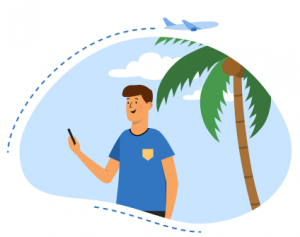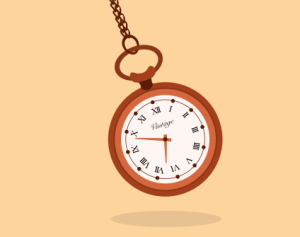The planning phase can be overwhelming and I’ve discovered that applying task management principles to travel planning not only reduces stress but also increases the overall experience. This is where Planndu, our task management app, becomes an indispensable travel companion. Let’s dive into approach that leverages Planndu’s powerful features to make your next adventure as smooth as possible.
1. Destination Inspiration
Start by efficiently researching potential destinations. Utilize Planndu to create a list for your travel planning. Within this list, set up tasks for researching different destinations. Use the app’s note-taking feature to jot down interesting facts, must-see attractions, and cultural insights for each potential location. Create subtasks for exploring travel blogs, Reddit threads (r/travel is a goldmine), and video content. Set aside focused time blocks in Planndu’s calendar feature to explore these resources. The app’s reminders will ensure you stick to your research schedule without getting lost in the endless travel content.
2. Budgeting
Approach your travel budget like a project manager, using Planndu as your financial planning hub. Create a dedicated list within your travel project for budgeting. Break it down into categories:
– Transportation
– Accommodation
– Food and dining
– Activities and entertainment
– Emergency fund
For each category, create a task with a numerical field to track your budget allocation. Use Planndu’s checklist feature within each task to itemize expected expenses. For food costs, leverage Google Maps’ price range feature ($, $$, $$$, $$$$) to estimate daily expenses, and record these estimates in your Planndu tasks.
Set up recurring reminders in Planndu to review and update your budget regularly as you plan. This meticulous planning prevents financial stress during your trip, allowing you to focus on enjoying your experiences. Plus, you can check and update your budget on the go.

3. Bookings
Treat flight and accommodation bookings as critical tasks within your Planndu travel project. Create a task for each booking you need to make, complete with deadlines and reminders. Use Planndu’s priority feature to highlight urgent bookings, ensuring you get the best deals. Set reminders in Planndu for any booking deadlines or cancellation policies. The app’s notification system will keep you on track, ensuring you never miss an important booking window or forget to confirm a reservation.
4. Packing Like a Pro
Here’s where Planndu’s travel packing template becomes your best friend. This pre-built template within the app provides a comprehensive starting point for your packing list. It includes categories like Essentials, Clothing, Toiletries, Tech, and Miscellaneous, each populated with common travel items.
Customize the template to fit your specific trip needs. Add, remove, or modify items based on your destination, duration, and activities. Use Planndu’s checklist feature within each category to tick off items as you pack them. Leverage Planndu’s reminder system to prompt you to start packing a few days before departure.
Planndu’s packing template include:
Clothes:
– Shirts
– Pants
– Underwear
Toiletries:
– Shampoo
– Toothbrush & toothpaste
– Perfume
Important Documents:
– Passport
– Tickets
– Drivers license
Medical:
– Pain reliveres
– Sunscreen
– Hand sanitizer
Electronics:
– Charger for all devices
– Tablet
– Headphones

5. Pre-Departure
In the days leading up to your trip, use Planndu to create a pre-departure checklist. Set up a comprehensive list of tasks to complete before you leave. Include items like:
– Setting up an out-of-office email response
– Arranging pet or plant care
– Checking in for flights
– Downloading offline maps and language packs
Assign deadlines to each task and use Planndu’s reminder system to ensure nothing falls through the cracks. By completing these tasks methodically with Planndu’s guidance, you’ll depart with peace of mind, ready to fully engage with your travel experiences.
6. On-the-Go Optimization
Once you’re on your journey, Planndu continues to be your organizational hub. Use the app to track daily plans, creating tasks for each activity or landmark you plan to visit. Leverage Planndu’s quick-add feature to note recommendations from locals or spontaneous ideas that come up during your trip.
Use the app’s notes to log memories and reflections at the end of each day. This real-time organization ensures you don’t miss out on spontaneous opportunities while still adhering to your overall itinerary.Planndu’s offline functionality means you can access and update your travel plans even without an internet connection, making it invaluable for international travel.
The app’s comprehensive task management, reminder system, and customizable templates work together to create a seamless planning experience. The goal isn’t just to check items off a list, but to create space for those serendipitous moments that make travel truly magical. With Planndu as your travel planning companion, you can approach your adventures with confidence, knowing that all the details are expertly managed.




